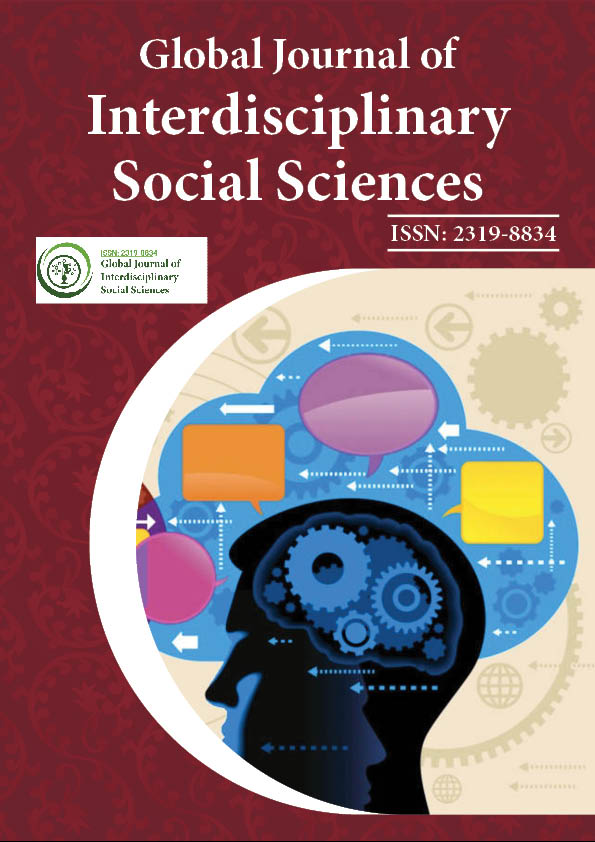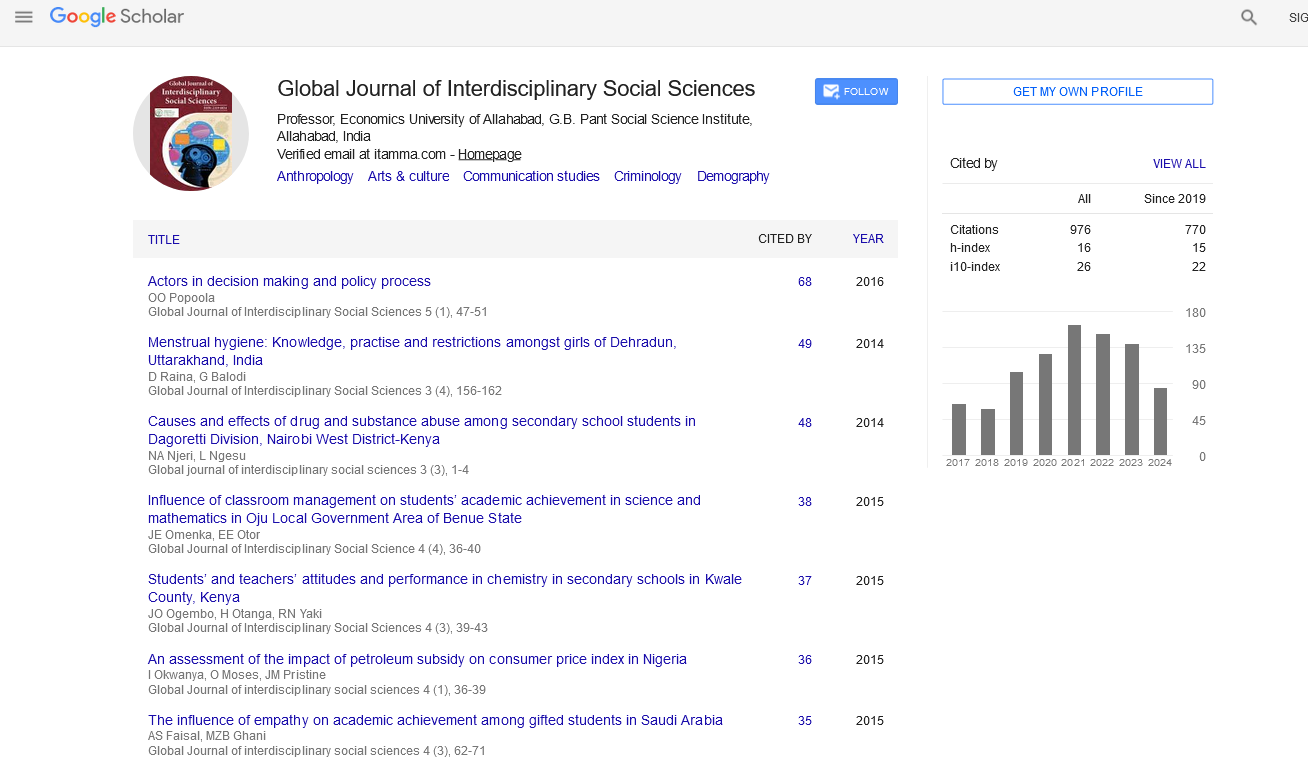Indexed In
- JournalTOCs
- Google Scholar
Useful Links
Share This Page
Journal Flyer

Open Access Journals
- Agri and Aquaculture
- Biochemistry
- Bioinformatics & Systems Biology
- Business & Management
- Chemistry
- Clinical Sciences
- Engineering
- Food & Nutrition
- General Science
- Genetics & Molecular Biology
- Immunology & Microbiology
- Medical Sciences
- Neuroscience & Psychology
- Nursing & Health Care
- Pharmaceutical Sciences
Perspective - (2024) Volume 13, Issue 1
The Fight Against Child Labour: Historical Progress and Modern-Day Struggles
James Kim*Received: 28-Feb-2024, Manuscript No. GJISS-24-27876; Editor assigned: 01-Mar-2024, Pre QC No. GJISS-24-27876 (PQ); Reviewed: 15-Mar-2024, QC No. GJISS-24-27876; Revised: 22-Mar-2024, Manuscript No. GJISS-24-27876 (R); Published: 29-Mar-2024, DOI: 10.35248/2319-8834.24.13.079
Description
Child labour, defined as the employment of children in a manner that hampers their physical, mental, or social development, has been a persistent social issue throughout history. In examining the status of child labour in the Western world, it is important to explore into the historical context that has shaped its evolution, the influential figures and movements that have influenced legislative change and the ongoing positive and negative aspects associated with its current state.
Historically, the phenomenon of child labour can be traced back to the Industrial Revolution in the late 18th and early 19th centuries. As industries grew, the demand for cheap labour surged, leading to the extensive employment of children. Factories, mines and agricultural fields became common workplaces for minors, who frequently faced unsafe conditions, long hours and minimal wages. This exploitation was not confined to a specific region; it permeated various Western nations, including the United Kingdom, the United States and parts of Europe. Children, viewed as an economic asset by many families struggling in poverty, were frequently employed in physically demanding roles that compromised their health and education.
The turning point in the struggle against child labour emerged in the late 19th and early 20th centuries when social reform movements began to advocate for children's rights and welfare. The legislative response to child labour gained momentum with the establishment of various laws aimed at regulating the employment of minors. The Fair Labour Standards Act of 1938 in the United States marked a significant milestone, as it set minimum age requirements for employment and established limits on working hours for children. Similarly, the UK Parliament enacted the Factory Acts, which progressively restricted child labour, mandating educational requirements and ensuring safer working conditions. These legislative measures signalled a collective recognition that the exploitation of children weakened both individual potential and societal progress.
Despite substantial advancements in legislation and public awareness, child labour has not been eradicated and the Western world continues to contend with its implications. The positive aspects of addressing child labour are reflected in the increased focus on education, child rights and welfare initiatives. Modern societies now recognize that a child’s right to education is utmost importance and that access to quality education is essential for interrupting the cycle of poverty. Organizations like UNICEF and various non-governmental organizations advocate for policies that protect children and ensure their access to educational opportunities.
Conversely, the negative aspects remain evident, even in developed nations. In the contemporary context, child labour may arise in less visible forms, such as in agriculture, domestic service and informal economies. The gig economy, characterized by short-term and flexible jobs, presents new challenges, as children may be used without formal contracts or protections. Additionally, vulnerable populations, including immigrant families, may be more susceptible to child labour exploitation due to socioeconomic pressures.
The impact of globalization cannot be overlooked in this discourse. The interconnectedness of the global economy has led to a demand for cheap labour, inadvertently perpetuating child labour practices in supply chains. Although Western nations have implemented regulations to curb child labour, their consumption patterns often drive the demand for products manufactured by child labour in developing countries. This paradox raises critical ethical questions regarding consumer responsibility and the role of corporations in upholding child rights globally.
In conclusion, the status of child labour in the Western world is a complex exchange of historical injustices, social reform and contemporary challenges. The arduous journey from extensive child exploitation during the industrial revolution to the establishment of strong legal frameworks highlighting children's rights highlights society's evolving perspective. Key figures and movements have played a significant role in this transition, yet the legacy of child labour lingers in subtler forms today. As Western societies continue to advocate for children's welfare, it is imperative to recognize both the strides made and the challenges that persist.
Citation: Kim J (2024). The Fight Against Child Labour: Historical Progress and Modern-Day Struggles. Global J Interdiscipl Soc Sci. 13:079.
Copyright: © 2024 Kim J. This is an open access article distributed under the terms of the Creative Commons Attribution License, which permits unrestricted use, distribution, and reproduction in any medium, provided the original author and source are credited.

